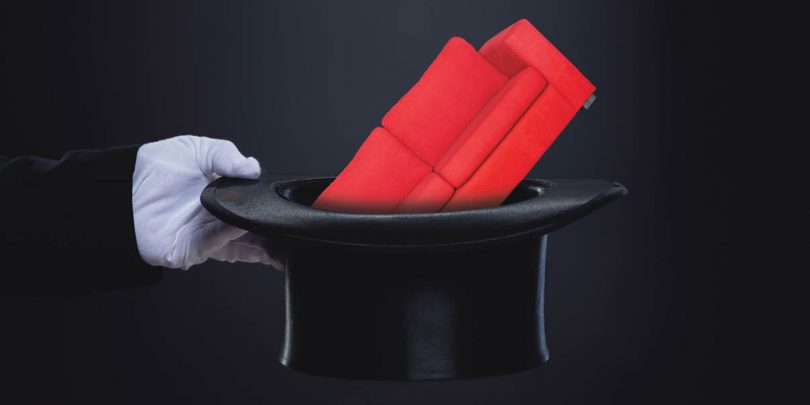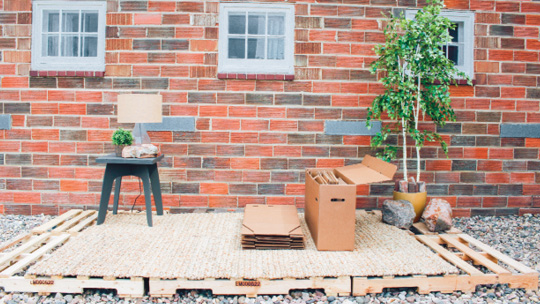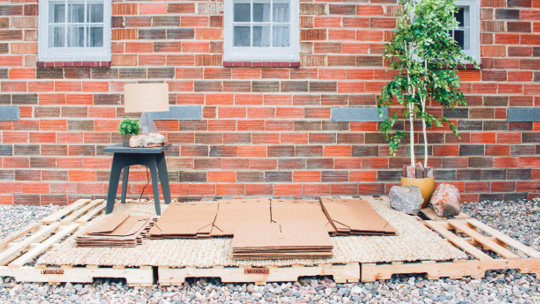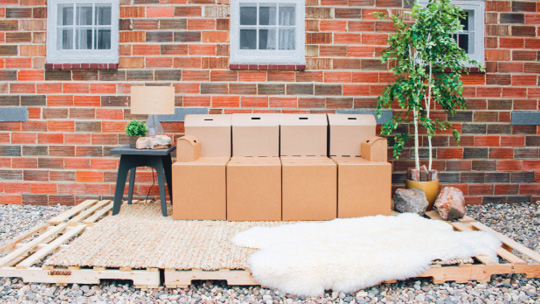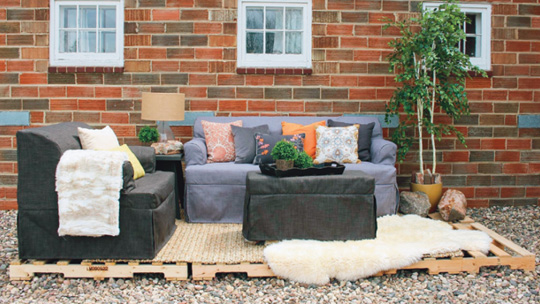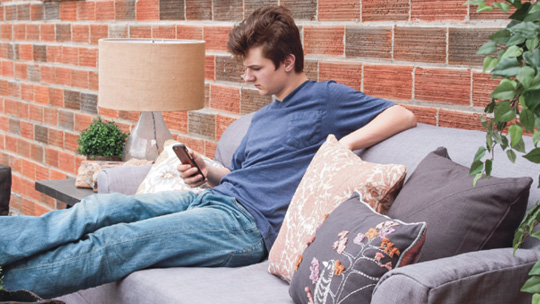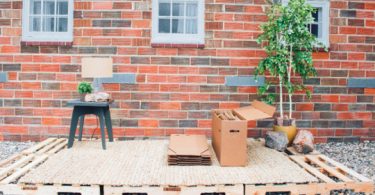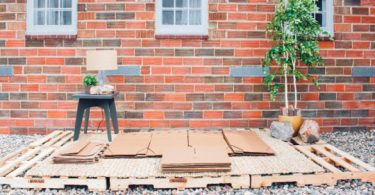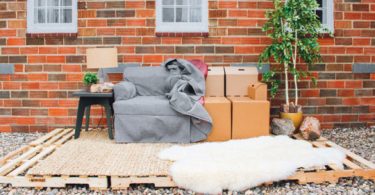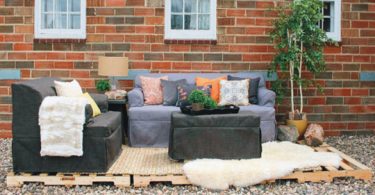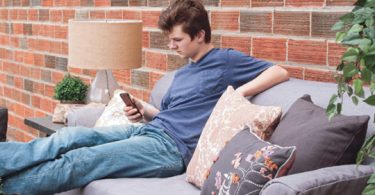Is it a smart move or a faux pas?
By Daniel Rome Levine
Easier to move and less expensive than a sofa or a bed, fake or faux furniture is popping up in showings around the country. Here’s the real story behind why some swear by it and others shudder at the thought of it.
Delivering furniture to a house she was preparing for a showing one morning, Kim Day Shacklock, CRS, a broker with Parks Realty, couldn’t believe her bad luck when she got into an accident and had to pull off to the side of the highway.
A photographer would be arriving at the house in Nashville in mere hours and three of the bedrooms were empty. Luckily for Shacklock, she was staging the bedrooms and a few other rooms with faux furniture, pieces that look real, but are not.
Standing on the shoulder of the busy interstate, Shacklock merely moved the inflatable beds, collapsible side tables and other items from the trunk of her car to her assistant’s car, and off they went. The staging was set up in time and the photo shoot went off without a hitch.
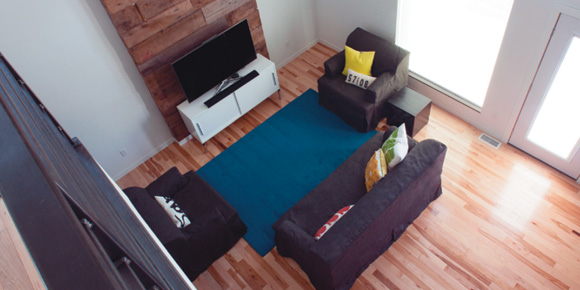
Research has shown that professionally staged homes tend to sell faster and at higher prices than homes that are not staged. Faux furniture is a great alternative to real furniture because it can substantially reduce the cost of staging a home for sale.
“Faux furniture is amazing,” Shacklock says, who uses it in certain rooms in every house she stages. “It is light and easy to use and really cuts down on cost. People have no idea that the items are not real.”
Across the country, many REALTORS® are realizing the benefits of furnishing homes for sale with lightweight, collapsible furniture made of materials such as cardboard, corrugated plastic and wood veneer. Items can be accented and dressed up with slipcovers and bedspreads so it’s hard to tell the fake from the real thing.
Those who use it say you get the same benefits of professional staging—people can better visualize what a room will look like rather than simply staring at an empty space—at a fraction of the cost. Furthermore, since the items are light and collapsible, storage, transport and setup are a breeze.
Furniture that Frees the Mind
Starting when he was 9 years old, Douglas Pinter used to drive his parents crazy when he’d move all the furniture around in his bedroom every couple of weeks. “I saw an unlimited combination of ways the room could be arranged,” he recalls. “All they saw was that I was ruining their wood floors.”
As an adult, Pinter, who calls himself a “serial entrepreneur,” has found the perfect outlet for his furniture-arranging obsession, and it doesn’t even damage floors. In 2012, he launched inFormed Space, a line of collapsible staging furniture made of hard, lightweight, recyclable plastic.
Besides being more cost-effective and easier to handle than regular furniture, Pinter says its simple, all-white, minimalist design is more effective. “It frees people psychologically to easily imagine how their pieces would look in the space,” he says. “In conventional staging, people are being shown a particular lifestyle, and invariably some don’t like the furniture and design choices. They also start doubting if their own furniture would look as good there. Our items don’t evoke those concerns.”
InFormed Space’s furniture is also versatile. Flat pieces of the rigid, white plastic are brought into a property in rolling laundry bins—it takes two to furnish a typical three-bedroom Manhattan apartment—and they are then unfolded and clicked together with hidden magnets. Pieces can easily be added to others to create a range of furniture.
“I can configure virtually any need by combining pieces,” says Pinter. “A loveseat can be turned into a three-seater sofa or a media center into a dresser.” Pinter charges about $2,000 to stage a typical Manhattan apartment for two months. He says traditional staging for the same space would cost as much as $10,000 a month.
Go Light
Karen Nielsen heads a faux furniture company, Dandy Pack, out of her home in Sioux Falls, South Dakota. Dandy Pack’s furniture is made out of lightweight, foldable sheets of cardboard that can be turned into cubes, stacked together and draped with slipcovers to create realistic looking sofas, beds and other pieces. Even though it is not intended for everyday use, people can sit on it without it breaking or collapsing.
As a former stager for five years who suffered several injuries hauling heavy furniture around houses, Nielsen appreciates the ease with which her faux furniture can be transported and set up. In fact, her husband, Kevin, who used to help her out, came up with the concept, telling her one day, “I don’t want to be a furniture mover the rest of my life. I’m going to figure out a way that you can stage a house yourself.”
Nielsen points to the key role photos play in online home searches and says her faux pieces will make any property stand out for a fraction of the cost of staging with real furniture. “I am getting calls daily from people, such as builders and flippers, who love our concept,” Nielsen says. “With traditional staging, you’re paying much more for something that really doesn’t look that much different.” Dandy Pack’s prices range from $133 for an ottoman to $1,031 for a queen bed, sofa, ottoman “starter kit.”
Can’t Fake It
But, similar to the controversy around virtual staging, not everyone feels these faux furniture pieces really compare to the real deal.
Shell Brodnax, CEO of the trade association representing professional home stagers, believes homes look better when they are staged with real furniture. “You really want a finished look to give clients the best possible return on their investment,” she says. Traditional staging of a vacant home of approximately 3,000 square feet ranges from $3,300 to $6,000 per month, says Brodnax.
Mike Hughes, CRS, of the Mike Hughes Team, Hughes Residential, in Boston agrees. Last October, Hughes hired a staging company to show a high-end, new-construction townhome that was listing for more than $1 million. The stager used regular furniture to fill most of the home, but decided to go faux with the beds and used inflatable ones. One day, the builder brought an investor through one of the properties without telling Hughes, and the beds were all leaking air and collapsing.
“What in the hell is this!” fumed the builder later to Hughes. “This is not professional. We’re paying $8,000 for staging and the furniture is garbage.”
“Our intention,” Hughes says, “was to have this high-end townhouse pop by having nice-looking furniture and we totally dropped the ball on that. If I did it over again, I would insist the stager only use regular furniture.”
Suite and Dandy
Dandy Pack offers reusable, flat-pack furniture made of cardboard that is set up and then covered with slipcovers. The lightweight material is easy to assemble and transport, it looks like realistic furniture, and it makes home staging more convenient. Items available from Dandy Pack include bedroom furniture, living room furniture, shelving, slipcovers and accessories.
While the furniture is not intended for everyday use, people are able to sit on it without it collapsing. Dandy Pack founder Karen Nielsen says. “If somebody sits on it, they’re not going anywhere.” She says that the furniture has passed lab crush tests and supports 1,000 pounds.
To view a video of the faux furniture setup process, go to dandypack.com and click on the Gallery tab. Or check out this Wall Street Journal video showing how inFormed Space sets up faux furniture.

